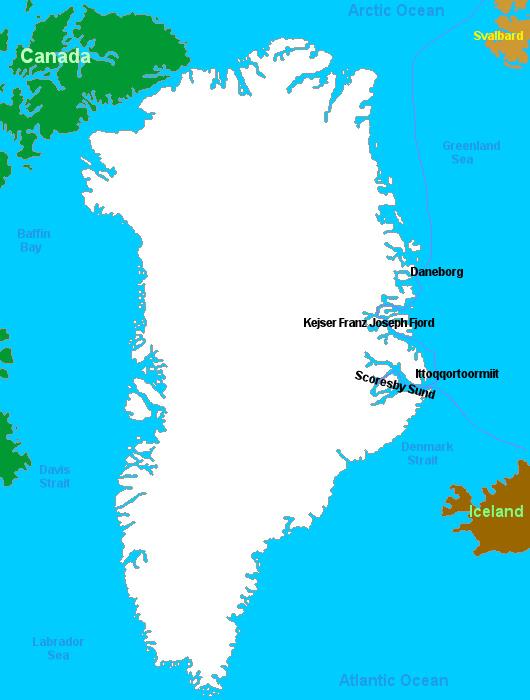Greenland

Historie
In prehistoric times, Greenland was home to several successive Paleo-Eskimo cultures known primarily through
archaeological finds. The earliest entry of the Paleo-Eskimo into Greenland is thought to have occurred about 2500 BC.
From around 2500 BC to 800 BC, southern and western Greenland was inhabited by the Saqqaq culture.
Around 800 BC, the Saqqaq culture disappeared and the Early Dorset culture emerged. The Dorset culture
population lived primarily from whale hunting.
The Thule culture people are the ancestors of the current Greenlandic population. They started migrating from
Alaska around 1000 AD, reaching Greenland around 1300 AD. The Thule culture was the first to introduce to Greenland
such technological innovations as dog sleds and toggling harpoons.
The Icelandic sagas include accounts of a number of Viking Voyages to Greenland, although most of the place
names recorded have usually been identified with locations in South or West Greenland. Some names have appeared in a
variety of positions on old charts which were based partly on interpretations of the sagas. The Icelandic Annals refer
to the discovery in 1194 of Svalbardr, or Svalbarda í Hafsbotn, the “country of the cold coasts”, which
some authorities identify with the Scoresby Sund region of East Greenland, and others with Jan Mayen or Spitzbergen.
In 1607 Henry Hudson was sent out by the Muscovy Company to seek a passage to Japan and China across
the North Pole. He sighted the coast of East Greenland on several occasions, and on June 22nd 1607 lay off
Hold with Hope. The only account of his observations records – “It was a mayne high land, nothing at all
covered with snow: and the North part of that mayne high Land was very high Mountaynes....wee thought good to name it,
Hold with hope, lying in 73. degrees of latitude”. Hold with Hope is the oldest place name currently in use in
East Greenland. While Hudson failed in the main purpose of his voyage, his accounts of the abundant whales in the
waters near Spitzbergen led to the development of the northern whale-fishery.
William Scoresby and his father were important figures in the history of arctic whaling, but were
also natural scientists, and even while engaged in the search for whales concerned themselves with scientific
observations of all kinds. Between June and August 1822 Scoresby was on numerous occasions close to land and
succeeded in laying down a chart of the East Greenland coast.
When the union between the crowns of Denmark and Norway was dissolved in 1814, the Treaty of Kiel Greenland
became under the control of the Danish monarch.
I visited Greenland in september 2013.
These are the places i have been in Greenland
Daneborg
Kejser Franz Joseph Fjord
Scoresby Sund
Ittoqqortoormiit
Please let me know when you're having questions.
i would be pleased to help you.
Things to do and other tips
